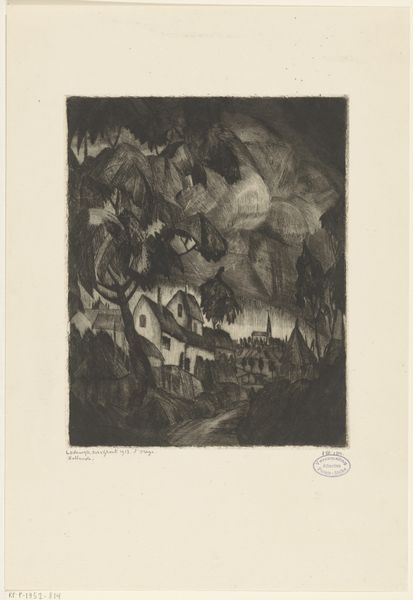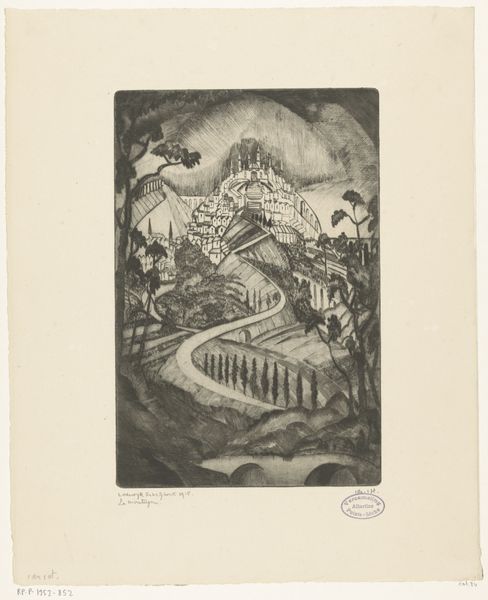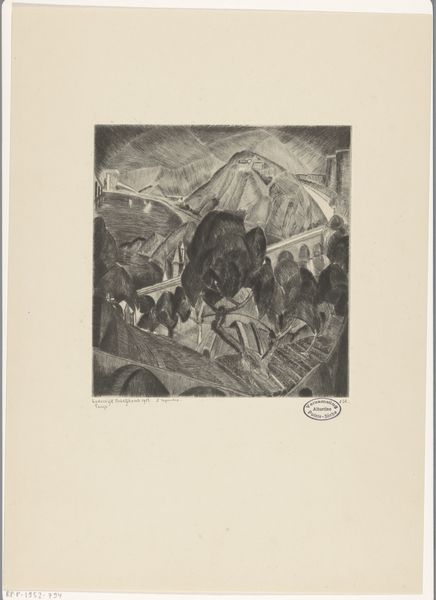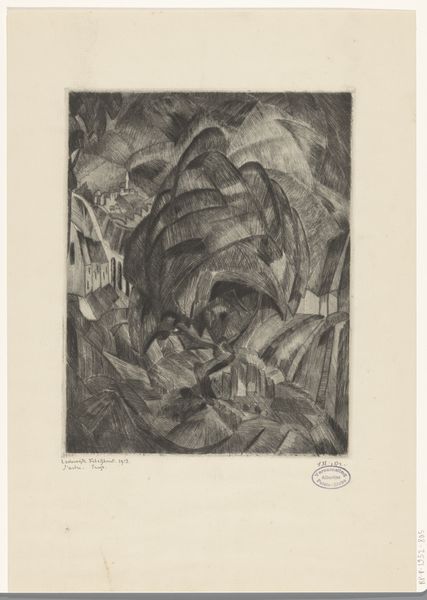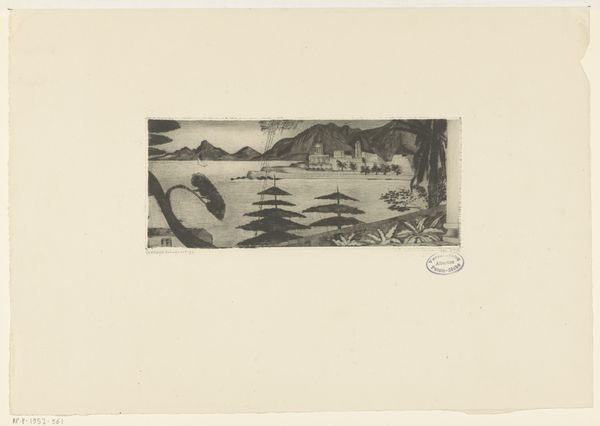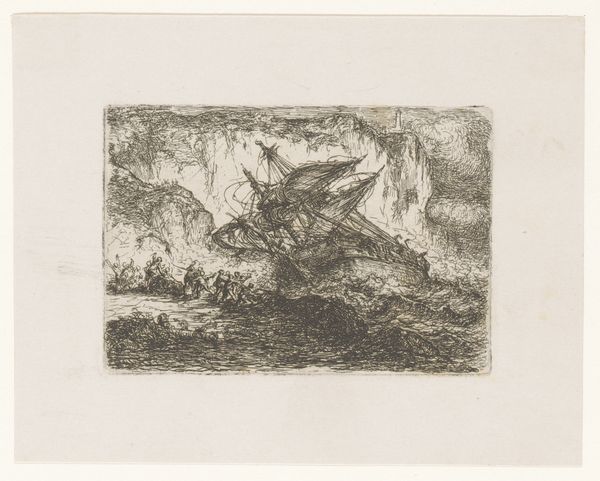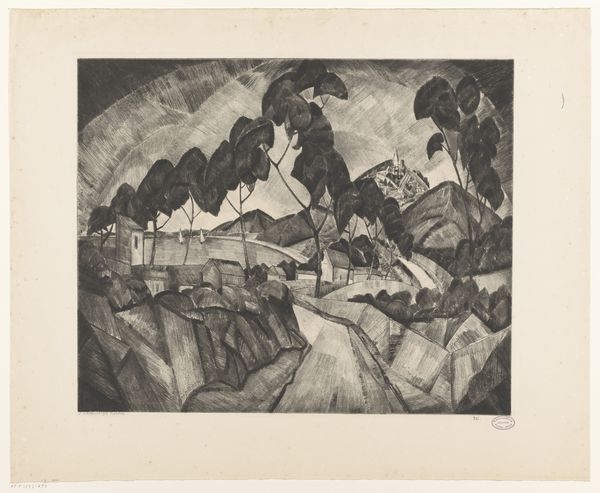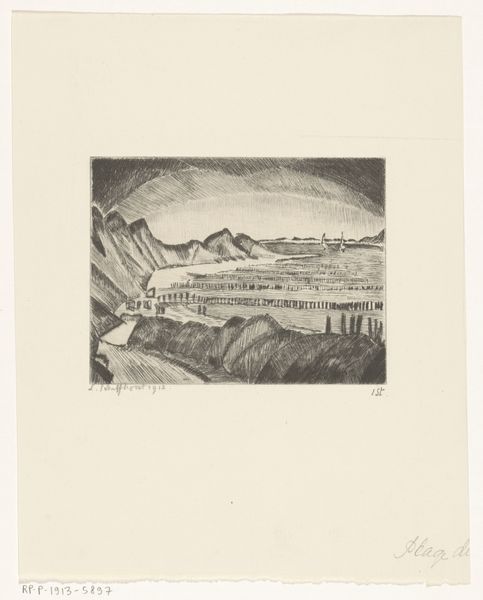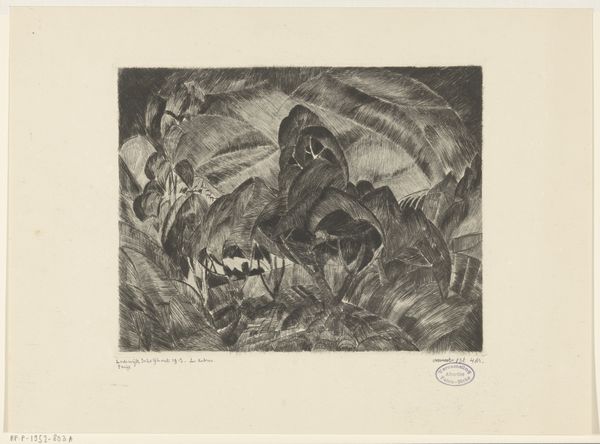
print, etching, paper
# print
#
etching
#
landscape
#
paper
#
geometric
#
modernism
#
monochrome
Dimensions: height 150 mm, width 200 mm
Copyright: Rijks Museum: Open Domain
Curator: Lodewijk Schelfhout's 1914 etching, "Heuvellandschap met bomen en bebouwing"—or "Hilly landscape with trees and buildings"—presents a captivating, if somewhat brooding, scene. It’s part of the Rijksmuseum’s collection. Editor: It immediately strikes me as quite dramatic. The stark contrasts of light and shadow, especially in the sky, give it a feeling of impending weather, or maybe even a touch of the sublime. Curator: Consider the historical context: 1914, the start of World War I. It's almost impossible not to see the socio-political unrest mirrored in the landscape. Perhaps Schelfhout used this scene to subtly address themes of uncertainty and vulnerability. Editor: That's an interesting angle. The fortress-like structure on the hilltop does seem less protective and more exposed given that understanding. Its geometric forms certainly convey a sense of modernism, yet the overall composition feels timeless. I'm curious about the choice of monochrome here. Was it simply the constraint of the etching medium, or something more? Curator: Monochrome inherently directs our gaze to the interplay of tonal values, enhancing the emotional impact. The absence of color encourages viewers to interpret mood and symbolism without distraction. Think of the political symbolism embedded within the work – did this choice further conceal this message? Editor: True. And when we discuss audience, its politics, and museum's cultural sway... Schelfhout presents this seemingly serene village as something potentially fragile. Do you think this vulnerability humanizes its occupants somehow? Was this a strategy to incite discussion about human relationships during moments of social despair? Curator: It absolutely reframes the village beyond a mere architectural form. It speaks volumes about humanity's precarious position during periods of seismic social change. The formal constraint with geometric pattern and monochromatic palatte presents complex ideas about social anxieties from Schelfhout. Editor: I hadn’t considered it that way at first, but by positioning the etching as a cultural artefact shaped by historical anxieties, it is so much richer to consider through contemporary lenses. Curator: Indeed. The artwork reflects not only the environment surrounding it but, simultaneously, shapes societal narratives around collective vulnerabilities.
Comments
No comments
Be the first to comment and join the conversation on the ultimate creative platform.
